Monday, April 10. 2006
It is the beginning of Forsythia season in Yankeeland. 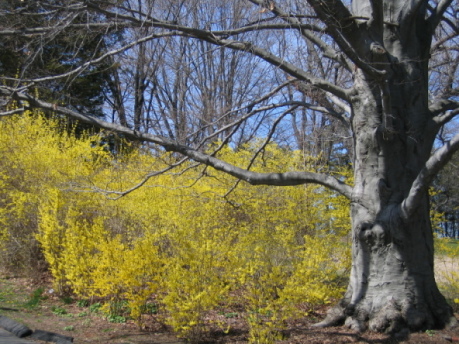
Friday, April 7. 2006
 Last chance to put in your orders: Last chance to put in your orders:
A great source for native plantings on a large scale: Musser Forests
A great source for fruits and berries, and miscellaneous: Miller Nurseries
The premier place for perennials: White Flower Farm
Great source for unusual varieties: Wayside Gardens
Thursday, April 6. 2006
In response to our Massachusett's reader's heated objections to the new law, Bruce Kesler of Democracy Project emailed this: I suggest he read this at National Review( http://www.nationalreview.com/comment/haislmaier200601271110.asp ), and realize many of his objections are met, and many of many others' are met, including why someone else should be responsible for his family exceeding his means to pay, and including that limited (more toward what he calls catastrophic) policies will be available at a more affordable cost.
Saturday, April 1. 2006
I was very fortunate to have my camera handy yesterday when I came out of my house in North Attlebury, MA, and was amazed to see an extinct Passenger Pigeon passing by. The size and the prominent white marginal tail feathers mark it clearly as a PP and neither a Rock Dove nor a Mourning Dove. It's mid-photo, on the right. The picture is not the best because I tripped over a bag of peat moss in my excitement. 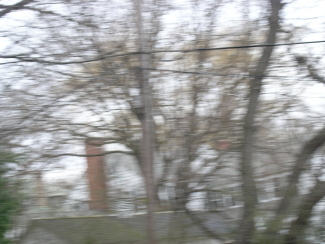
As further proof of my sighting, here's a photo of the peat moss that I tripped over: 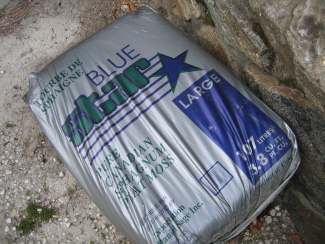
And, as final, incontrovertible proof, here's my girlfriend with a hearty endorsement: "If he says he saw something, he probably maybe did, but I wouldn't swear to it. He is full of it, sometimes." 
Friday, March 24. 2006
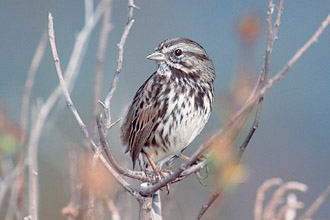 The Song Sparrow may be the most common sparrow in the Eastern US, but is found across the country and Canada. He is on my mind because I have just begun to hear his spring song last week, which will continue throughout the summer (unlike most songbirds who sing territorially in the spring, and then keep quiet). The Song Sparrow may be the most common sparrow in the Eastern US, but is found across the country and Canada. He is on my mind because I have just begun to hear his spring song last week, which will continue throughout the summer (unlike most songbirds who sing territorially in the spring, and then keep quiet).
He is an easy sparrow to identify, with the streaked breast with the big blotch in the center. And, perched on the top of a shrub branch, head tilted to the sky, pouring his heart out, he is hard to miss. Interestingly, his song has many regional accents, but the basic format remains the same. More about the exhuberant Song Sparrow, with sample of his familiar song, at CLO. Photo courtesy of P. LaTourette.
Monday, March 20. 2006
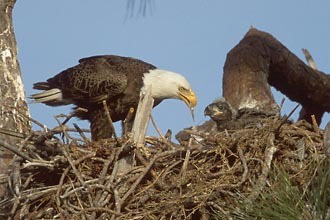 The Eagle Cam The Eagle Cam (and the Osprey Cam too) are up and running at Blackwater NWR in Maryland, with eaglets already in the nest.
Wednesday, March 1. 2006
The Sharpie is one of the most commonly seen 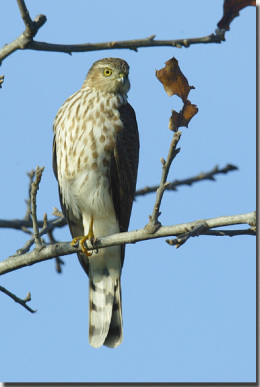
small hawks in the US. He is our smallest member of the Accipter family of hawks, which are designed to catch smaller birds. In winter, they are known to hang around bird-feeders, where they have good sport with the sparrows and finches, and fine dining for them at the end of the game. You will see their flap-flap-glide flying pattern at woodland edges, or more often see them perched in an open area, surveying the landscape for likely prey and just enjoying being alive. Diagnostic issue: If you can tell a female Sharpie from a Coopers Hawk, you are a pro birder. I cannot. More about Sharpies at CLO. Photo courtesy of Bill Horn.
Tuesday, February 21. 2006
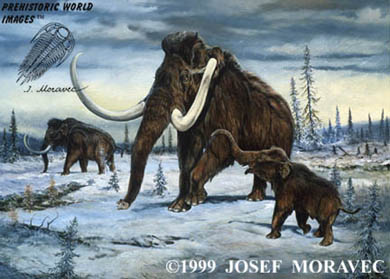 I have read about 100 articles about climate over the past year, from the scientific to the pop science. That doesn't make me an expert. But it's enough to throw out a few facts and opinions. I have read about 100 articles about climate over the past year, from the scientific to the pop science. That doesn't make me an expert. But it's enough to throw out a few facts and opinions.
Facts: Climate changes over time, with or without humans. Since the beginnings of agriculture, humans have impacted climate. We live in an interglacial, during a time of retreating ice sheets - but still in what is technically an ice-age - meaning polar ice caps. During most of the planet's history, there have been none. We are in a cold spell. Short-term variations and swings of climate mean no more that short-term swings in the stock market. Carbon material in the air probably does contribute to net warming. In the past week, YARGB has done a post on the hockey stick graph - often used to inspire climate terror. And yesterday, Libertarian Leanings posted Sound the Alarm...Again, in response to the newspaper's hysteria about Greenland ice sheets. Michaels, who has been a real scholar in this area, points out that the articles on the glaciers fail to mention that ice is accumulating in Greenland faster than the glaciers are melting. Opinion: Climate and climate-modeling are incredibly complex, and if carbon material in the atmosphere plays a role in the current interglacial warming, so be it. It won't be enough to prevent the return of the next glaciation. It hardly matters what we do in the US anyway - that hybrid car might make you feel virtuous but it does nothing...the manufacture of the batteries spills tons of CO2. And countries like Russia, China, India and developing countries are dying for the chance to burn oil the way the US and Europe do - and they will. Thus nothing meaningful will be or can be done, except maybe some very expensive, feel-good cosmetics. Eventually, nuclear power will replace carbon sources, but climate is not the main reason to do that. Energy independence, and economy, is the reason to do that. At some point, oil power will look the way horse power looks to us today. I refuse to worry pointlessly about it, nor will I worry about an asteroid hitting the earth. As long as there are billions of people on earth, we will effect climate, and everything else, somehow. (Image: Wooly Mammoth in New Jersey, summertime, a few thousand years ago, by paleo-artist Moravec.)
Sunday, February 19. 2006
By way of follow-up on our piece yesterday on flooding and flood insurance, a piece came out yesterday by the AP's Bridges noting the increase of development in flood zones: Concentrated development in flood-prone parts of Missouri, California and other states has significantly raised the risk of New Orleans-style flooding as people snap up new homes even in areas recently deluged, researchers said Saturday. Around St. Louis, where the Mississippi River lapped at the steps of the Gateway Arch during the 1993 flood, more than 14,000 acres of flood plain have been developed since then. That has reduced the region's ability to store water during future floods and potentially put more people in harm's way, said Adolphus Busch IV, a scion of the Anheuser-Busch brewing family who is chairman of the Great Rivers Habitat Alliance. Similar development has occurred around Dallas, Kansas City, Mo., Los Angeles, Omaha, Neb., and Sacramento, Calif., said Gerald Galloway, a professor of engineering at the University of Maryland.
Read the whole thing in the Houston Chronicle. Wish we could get some congressmen interested. Who wouldn't have a chat over a free Bud with Adolphus?
Saturday, February 18. 2006
 The National Flood Insurance Program is bankrupt. Not recently. That means that taxpayers are subsidizing building in flood zones, flood plains, and areas with high risk of natural water disasters - and thus encouraging, rather than discouraging, stupid behavior by making it economically risk-free to the individual. The National Flood Insurance Program is bankrupt. Not recently. That means that taxpayers are subsidizing building in flood zones, flood plains, and areas with high risk of natural water disasters - and thus encouraging, rather than discouraging, stupid behavior by making it economically risk-free to the individual.
For reasons of principle, conservation, and common sense, this subsidy should end. If you chose to live in such a high-risk place, you should carry the risk, not me. Flood Insurance should be a purely commercial enterprise, the same as any other aspect of homeowner's insurance. Not retroactively, but in the future. Somehow, I doubt anyone in DC cares about this every much, but the Katrina costs should be a chance to reconfigure this insurance/subsidy scam. From Burnett at TCS: When people own property and are fully responsible for losses due to their poor land use or development decisions, they are less likely to build or rebuild in areas regularly prone to flooding or erosion. This link -- between a person's property ownership and responsibility for their land use decisions -- disciplines people who use their property badly. Unfortunately, a host of government programs break this link by subsidizing unwise development. All too often the result is lost lives, destroyed property and diminished livelihoods. The U.S. Army Corps of Engineers (Corps) flood control program and federal flood insurance subsidize construction in flood-prone areas and encourage high-risk development by shifting the cost of insurance and physical protection against floods from property owners to taxpayers. The result: more construction in high risk areas. Its economics 101 -- if you subsidize something you get more of it.
I guess politics trumps logic, every time. Read entire. (Image from New Orleans)
Monday, February 13. 2006
It is widely accepted today that the early Indians were responsible for the extinction of the large animals of North America - the amazing Pleistocene mammals - mammoths, camels, etc. that were abundant here during the retreat of the most recent Ice Age. However, now it appears that the Indians had a major impact on all edible species, and that the abundance of animals found by the early European explorers may have been a consequence of the Indian population collapse due to disease. Story about the Indians and California wildlife here. For really old animals - Spinosaurus. It seems that this guy was the largest carnivorous dinosaur. H/T, Lucianne.
This migrating flock of mostly male Robins breezed in around 4 this afternoon, the day after the Big Snow. 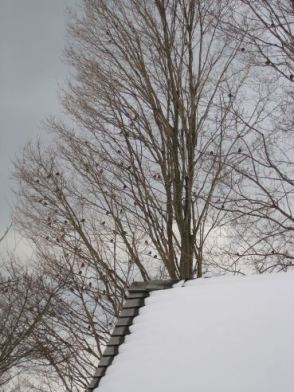
Monday, January 30. 2006
At the request of Mr. Free 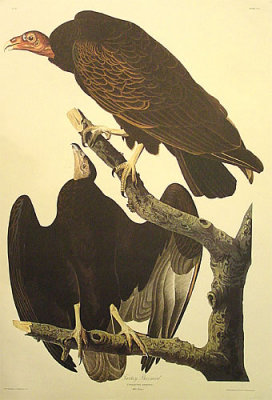 Market, we bring you one of Market, we bring you one of
the ugliest birds in North America. These large carrion eaters and scavengers have expanded their range north in recent decades, and now can be found throughout the US during the summer breeding season. They move to the southern US and South America in the fall. Birders call them "TVs." They find their food by sight and by smell, and are most commonly seen coasting around on thermals, effortlessly searching for dead animals with their long wings at a marked dihedral. They like to nest on cliffs. Identification: The Black Vulture of the American south is one similar species, and, because of its size, it could be confused with Golden Eagle at a distance. Why "turkey"? It's not just because of the unfeathered head, but also because they resemble Wild Turkeys from a distance when seated on the ground as they hunker over a dead deer or road kill. More about this vulture at the CLO site here. Image by Audubon.
Wednesday, January 25. 2006
Rows and floes of angel hair
And ice cream castles in the air
And feather canyons ev’rywhere
I’ve looked at clouds that way
But now they only block the sun
They rain and snow on ev’ryone
So many things I would have done
But clouds got in my way
I’ve looked at clouds from both sides now
From up and down, and still somehow
It’s cloud illusions I recall
I really don’t know clouds at all From Joni Mitchell's Both Sides, Now. You only need to write one song like that in your life. But this piece is about changing cloud cover, and how it effects heat balance on the earth. It seems to be a changeable thing. Scientists don't understand clouds very well.
Friday, January 13. 2006
Bobcat My pal Walter took this remarkable photo in northern Litchfield County, CT, on Sunday. A hell of a photo of this elusive critter. Info about this wonderful predator here. 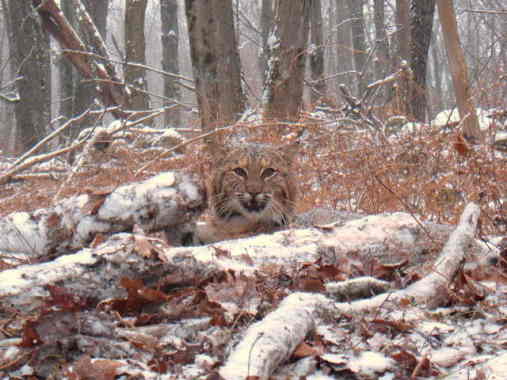
Thursday, January 5. 2006
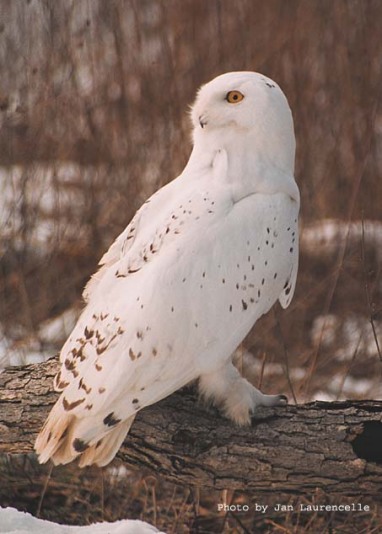 The magnificent Snowy Owl
can be found almost
anywhere in the US during
the mid-winter when they tend to move south from their tundra home, and on some low-lemming years in considerable numbers. 1973/74 was remarkable for Snowies. I have a friend who had one using his roof as a perch in CT for a week. These tundra birds are partial in general to tundra-like wind-swept areas in the winter: marshes, shores, large fields, garbage landfills, etc., and hunt from a low perch or sit on the ground. They are daytime hunters and eat any small furry things but voles (meadow mice), rats, and the like are their main diet. In the northeast, it isn't unusual to find them on eastern Long Island and Cape Cod. Info on the Snowy here at CLO. Remarkable the way owls can turn their heads around, isn't it, as in this photo by Janice Laurencelle via Owl Pages.
Thursday, December 29. 2005
 Turtle Conservation Turtle Conservation
Among the many predators of sea turtles, Mexicans with the notion that they enhance potency may be the most devastating. So there's an ad campaign. Worth trying. Story here. Moral of the story: Guys who like turtles get the hot babes.
Thursday, December 8. 2005
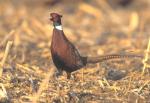 The pheasant was an early game bird introduction to America. A very handsome Asian native, it had already been a popular game bird in Europe when first brought to the US during colonial times by sportsmen (to Virginia, in fact, where it did not prosper). The hen pheasant comes in a plain brown wrapper with a shorter tail, but the roosters can appear in atypical colors due to hybridizing efforts. The pheasant is a rare example of an introduced bird which has no deleterious effects on existing ecosystems. The pheasant was an early game bird introduction to America. A very handsome Asian native, it had already been a popular game bird in Europe when first brought to the US during colonial times by sportsmen (to Virginia, in fact, where it did not prosper). The hen pheasant comes in a plain brown wrapper with a shorter tail, but the roosters can appear in atypical colors due to hybridizing efforts. The pheasant is a rare example of an introduced bird which has no deleterious effects on existing ecosystems.
Pheasant prefers northern, open agricultural lands with areas of dense cover, and does not survive in the southern US. Pheasant is widely pen-bred and reared for hunting purposes, but few released birds in the US survive assaults from red-tailed hawks and coyotes, as they have not had the opportunity to become street-wise. The bulk of the wild, breeding populations are in the Dakotas, but they are found throughout the northern midwest and can even be found occasionally in the northeast. As agriculture has become more efficient, their numbers have slowly declined. In Europe, pen-raised birds are typically allowed to enter an area where they have the chance to become semi-wild, capable of strong flight, and independent, but are held by food until the day they are driven by beaters into high flight designed to be challenging for shooters. In the western US, pheasant are hunted with dogs, or driven to the ends of large fields where they are forced into flight. In the eastern US, typically, fat pheasants are hunted on the day of release, hence our pal L's expression "flying mattresses." Such birds are not particularly sporty but most of us have found ways to miss plenty of them, especially when given time to think. It is considered proper decorum to let them get well underway in flight before pulling the trigger since, unlike grouse, you usually have a fairly open shot and you don't want your pellets to turn them into ground hamburger meat. In the midwest and west, pen-raised birds are used to supplement wild populations for sportsmen. Fun to hunt? Definitely. Good for dog work? Yes. Good to eat? You bet. Cook to pink in the center. Read more about Ring Necked Pheasant at CLO. An organization called Pheasants Forever works on land management for pheasant. (Details of English pheasant rearing practices corrected thanks to our across-the-pond cousin Mr. FMFT)
Friday, December 2. 2005
 We enter duck season these weeks, in many areas of the US. We enter duck season these weeks, in many areas of the US.
The noble Mallard is the King of Ducks in the US. He is our most abundant and adaptable duck, and the tastiest, at least for those for whom the others are too gamey. (Not for me, tho.) He is found across the entire US and most of Canada, wherever water is nearby, from parks to prairies, and everyone is familiar with this handsome drake who is often seen in companionship with his plain, brown hen. These ducks are highly migratory in the mid-west and west, following unfrozen water south. (Like most species of ducks, they tend to prefer fresh to salt water.) Thus their widespread population is heavily concentrated in the southern US during the winter. Many duck hunters will shoot nothing but drake Mallards. And they are a fine bird, even if you do not hunt them. More info about the sporty Mallard here.
Here's a shot from our Ducks Unlimited Dinner Thursday night. We have a superb committee of guys who put this together each year, and an excellent crowd of semi-rowdy and actively-bidding sportsmen. We must have raffled at least 15 rifles and shotguns, among the 100+ cool items and trips, etc we raffled and auctioned. Good, wholesome, well-lubricated American fun for the cause of conservation. Now we begin planning for next year, but first the committee will relax and enjoy a few pheasant shoots with the dogs before the snow flies. 
Thursday, December 1. 2005
Light Blogging Today Your editor will be preoccupied today with an annual charity event tonight for a favorite conservation organization - Ducks Unlimited - which has over 700,000 members in the US and Canada, and over 11 million acres of wildlife habitat under protection and management. We raise them a lot of money each year at a festive Christmas-themed guy's night out, but it's a fair amount of work getting things ready. Special thanks are due to Vineyard Vines, who has donated our table gifts this year, and to Windjammer Barefoot Cruises and Land Rover, who have been loyal supporters for many years.
Thursday, November 17. 2005
Grizzlies and Sea Otters It's a pleasure to have two conservation success stories at once. First, a report on studying the Yellowstone Grizzlies who have made a remarkable comeback. It looks to be a short series in the CSM. Second, the resurgence of the Pacific coast's Sea Otter has fishermen bent out of shape, although the otters' numbers are nowhere close to what they were historically. They have to eat, too. CNN
Thursday, November 10. 2005
Ducks Unlimited If there is one thing that all Maggie's Farm's contributors share, besides friendship and trust, it is support of the conservation efforts of Ducks Unlimited. Unlike some (not to be mentioned) conservation organizations, DU goes out there and just does it, rather than spending all of their money on lobbying to try to get the government to do it. But, as the experts in habitat recovery, and owning the strange heavy machinery to do it, they often work in tandem with government efforts. And it's interesting because it's what I call a cross-over organization, combining hunters, conservationists, environmentalists, wildlife photographers, bird-watchers, hikers, naturalists, and scientists - and all sorts of people for whom protection of natural habitat is important. DU is huge, with over 11 million acres under protection now, and over 700,000 members in the US. Grass-roots fund-raising has been their mainstay, and if you do not have DU events in your neighborhood, you should. Email us if you want to get involved in your area - we'll direct you to the right contact person. DU events are good, wholesome, American fun, for a great cause. Their efforts support, protect, and rehabilitate wildlife habitat across Canada, the US, and Mexico, and they have been expanding world-wide (including helping with the rehabilitation of Iraq's marshes which were destroyed by Saddam in his program to eliminate the annoying "Marsh Arabs" who were one of many thorns in his side. Mesopotamia - Between the Rivers - was not only the cradle of civilization but an enormous and highly productive marsh). DU people love "swamps", and all other wildlife habitats. Maggie's Farm loves DU.
Friday, November 4. 2005
Migration Updates from our friends at Lighthouse Point, New Haven - a south wind this week, so no migrating hawks: 10/31: 800+ Black-capped Chickadees, 1,500 Cedar Waxwings, 1,000 American Robins, 120 Eastern Bluebirds, 2,000 Red-winged Blackbirds, 350 House Finches 11/02: Migration flight from approx 7:00 AM thru 10 AM and then slowed down... 5000+ BLACKBIRDS/ GRACKLES, 850+ CEDAR WAXWINGS, 75 COWBIRDS, 1200+ ROBINS, 45 BLUEBIRDS, 200+ BRANT
Thursday, October 27. 2005
Bell the Cat and Shock the Dog If you have an outdoor cat, please bell that cat. The domestic cat is the major destroyers of songbirds, and, since cats come from Egypt, our local birds aren't genetically prepared for them. I don't care whether they are natural hunters - they don't belong here. As far as turtles go, I use the training collar to train my dogs off turtles when I am tramping through the woods and marshes. This might sound just a little wierd to do, but domestic dogs, along with car tires, are the main killers of turtles like our endangered Box and Wood Turtles and, once again, these dog predators are not native to the northeast. A dog can kill a turtle with one bite. When they get near a turtle, I give them a good shock and a loud "Careful", and that seems to handle it fairly well. (Same procedure works for rattlesnakes in the south and west.) They learn after once or twice that reptiles are surrounded by a magic electromagnetic force field, and leave them alone. Training collars: Yes, we believe in them absolutely. Used correctly, they will save your dog's life, and help you raise a dog that you can live with easily, without harming your dog one bit. Who wants a disobedient dog? Nobody - an untrained dog is nothing but a burden, whether in suburbia, the city, or in the hunting fields. And a dog that is a burden gets neglected, while an obedient dog gets love and company. Some dog trainers refuse to use the training collars to reinforce obedience training, but I think that is silly and overly sentimental: you cannot reason with a dog, and obedience cannot be optional. Carrot and stick.
|
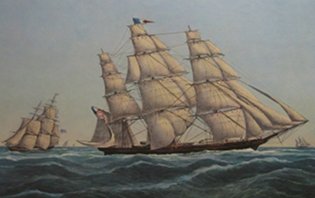


 Last chance to put in your orders:
Last chance to put in your orders:


 The Song Sparrow may be the most common sparrow in the Eastern US, but is found across the country and Canada. He is on my mind because I have just begun to hear his spring song last week, which will continue throughout the summer (unlike most songbirds who sing territorially in the spring, and then keep quiet).
The Song Sparrow may be the most common sparrow in the Eastern US, but is found across the country and Canada. He is on my mind because I have just begun to hear his spring song last week, which will continue throughout the summer (unlike most songbirds who sing territorially in the spring, and then keep quiet).

 I have read about 100 articles about climate over the past year, from the scientific to the pop science. That doesn't make me an expert. But it's enough to throw out a few facts and opinions.
I have read about 100 articles about climate over the past year, from the scientific to the pop science. That doesn't make me an expert. But it's enough to throw out a few facts and opinions. The National Flood Insurance Program is bankrupt. Not recently. That means that taxpayers are subsidizing building in flood zones, flood plains, and areas with high risk of natural water disasters - and thus encouraging, rather than discouraging, stupid behavior by making it economically risk-free to the individual.
The National Flood Insurance Program is bankrupt. Not recently. That means that taxpayers are subsidizing building in flood zones, flood plains, and areas with high risk of natural water disasters - and thus encouraging, rather than discouraging, stupid behavior by making it economically risk-free to the individual.
 Market, we bring you one of
Market, we bring you one of 

 Turtle Conservation
Turtle Conservation The pheasant was an early game bird introduction to America. A very handsome Asian native, it had already been a popular game bird in Europe when first brought to the US during colonial times by sportsmen (to Virginia, in fact, where it did not prosper). The hen pheasant comes in a plain brown wrapper with a shorter tail, but the roosters can appear in atypical colors due to hybridizing efforts. The pheasant is a rare example of an introduced bird which has no deleterious effects on existing ecosystems.
The pheasant was an early game bird introduction to America. A very handsome Asian native, it had already been a popular game bird in Europe when first brought to the US during colonial times by sportsmen (to Virginia, in fact, where it did not prosper). The hen pheasant comes in a plain brown wrapper with a shorter tail, but the roosters can appear in atypical colors due to hybridizing efforts. The pheasant is a rare example of an introduced bird which has no deleterious effects on existing ecosystems. We enter duck season these weeks, in many areas of the US.
We enter duck season these weeks, in many areas of the US. 